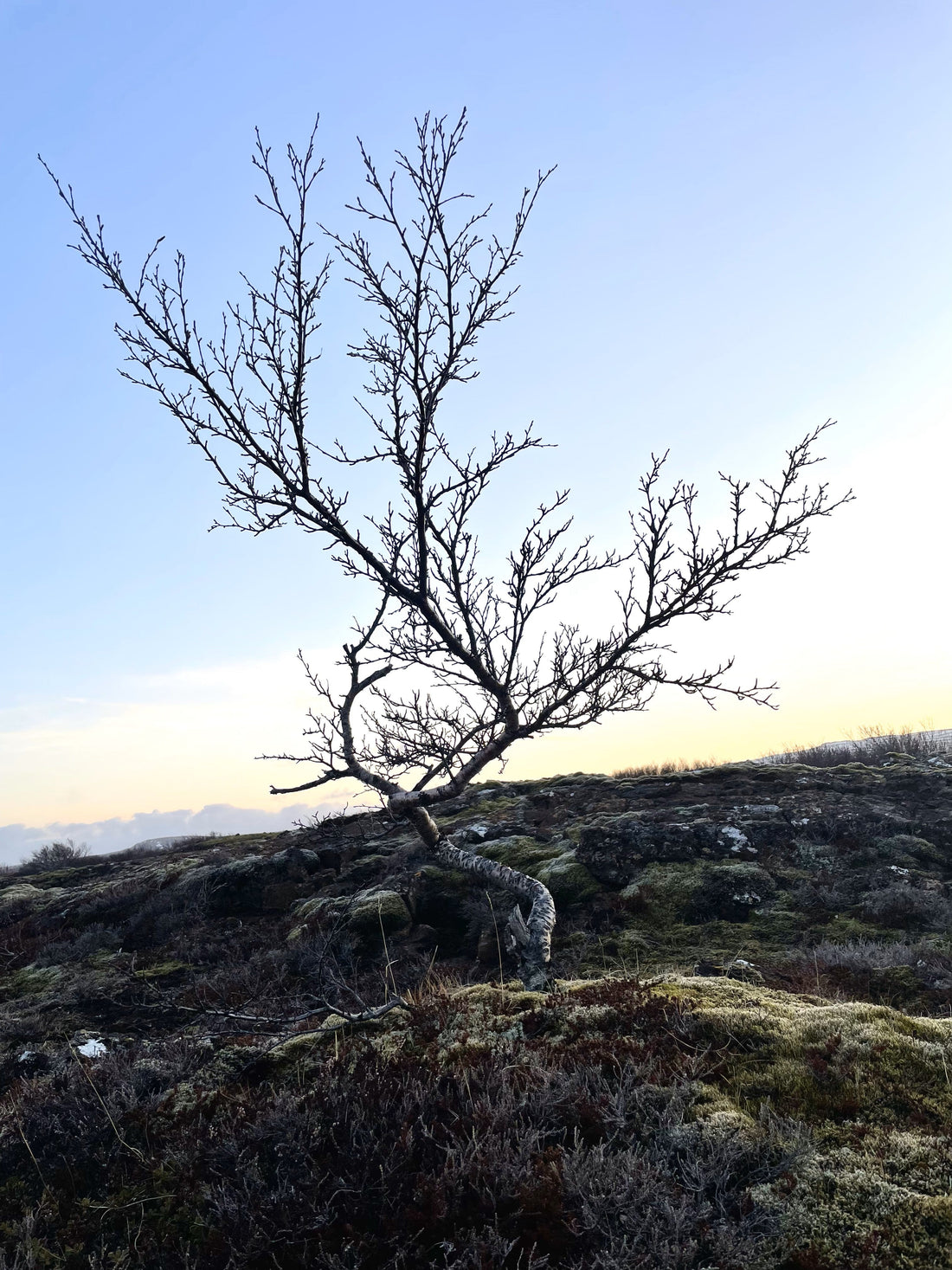
Animism in a World of Concrete and Consumption
Share
This post is not only for those who engage in ecological animism, but for all practitioners. Animism, in all its forms, is an acknowledgment of spirit in everything. Some animists work closely with manmade objects, tools, or even digital spaces as spirited entities, while others focus on the natural world - its land, waters, creatures, and materials. This post speaks to ecological animism, the recognition that every material in our lives - every chair, every road, every structure - is made from something that was once part of an ecosystem. Even spirits inhabiting manmade objects that seem far removed from nature still carry the essence of what they were before they were shaped into their current form. Nothing is truly separate from the land. Nothing exists without consequence. Every item in our lives, from the most natural to the most synthetic, carries an origin, a history, and a presence. If animism is about recognizing and honoring the spirit and consciousness of place and substance, then we cannot separate what is "wild" from what has been transformed.
Animism in History
Long before organized religions and theological debates, humans understood that the world was alive. Ancient peoples didn’t just see land as a resource; they recognized it as both one spirit and a thousand thousand spirits. Rivers weren’t just water; they were powerful beings, sometimes deities. Mountains were viewed as ancestors rather than obstacles. Fire, wind, storms, stones - everything was believed to have a presence, a will, and a consciousness. And to ignore or mistreat them was to invite consequence.
This belief wasn’t limited to one culture or region. Across the world, animism has existed in countless forms throughout history, shaping Indigenous traditions, folk practices, and spiritual frameworks long before terms like "religion" or "philosophy" existed. But as societies industrialized, religion spread, and populations grew, this awareness faded. What was once a fundamental truth became labeled as "heathen superstition." The belief that everything possesses spirit or consciousness was systematically stamped out by monotheistic religions that framed such thinking as idolatry and paganism. Further still, industrialization and capitalism reduced land to profit and materials to commodities. Nature became something to extract from, dominate, and discard. Objects became disposable at alarming rates.
And slowly, we lost the fundamental awareness that food, clothing, tools, and technology come from living materials. That every object we touch is a fragment of something that once stood, grew, or moved freely.
Yet, the spirits remain. The land holds memory. The materials in our daily lives still carry the energies, histories, and voices of their origins. Despite our modern willful detachment, that connection is never truly gone.
I would argue that most of us are natural animists from birth, but at some point, society drills it out of us. It stops being cute to think your stuffed animals are alive. It becomes weird to worry that your teddy bear is suffocating in a suitcase. And yeah, I was one of those kids. I still am, if I’m being honest...
Spirit Is Everywhere
There is a stereotype that animism is something you can only practice or understand if you are barefoot in the dirt, deep in the woods, or immersed in some remote place where nature is still “wild.” Don’t get me wrong - those places offer their own powerful, primal connections. But location is generally only relevant when you seek an immersive experience or are trying to develop a connection with a local land spirit.
When it comes to honoring the spirit of an object, a material, or an element, location does not matter. Just like your soul is present whether you are at the grocery store or on your couch, consciousness can exist wherever that object or material is located.
This is an especially important point for those of you who feel disconnected from natural rhythms and struggle to form energetic relationships because you are surrounded by concrete and steel. But herein lies the beautiful truth of animism: the energy of the land and its inhabitants is not erased by pavement and development. The spirits of a place do not necessarily vanish when buildings go up (unless they choose to leave with the extracted materials), and the steel, stone, and glass of urban landscapes still carry the consciousness of their origins as new spirits, hybrid spirits, forgotten spirits, and lingering echoes.
The same energetic conversations happening in old-growth forests are happening in the wood of your home, the cracks in the sidewalk, the rusting metal of a fire escape, and in the rain pooling in a rooftop garden or a window planter box.
For me, true animism is not about prioritizing spirits in “untouched” landscapes while ignoring everything else. It is about recognizing the threads of consciousness in all things - whether that’s a 500-year-old tree, the metal railing on your balcony, the leather of an old chair, or the asphalt beneath your tires.
I argue that willfully ignoring the costs (sacrifices, alterations, and losses) of the materials we use is to engage in a self-indulgent and incomplete animistic practice. Every object carries a lineage, a journey, a cost. And your relationship with those energies matters. As much as modern society is a melting pot of people from different cultures, races, bloodlines, and traditions, it is also a melting pot of the materials that shape our world. Every object around you carries a lineage, a journey, and a cost.
Your relationship with those energies matters. Your local environment and the items around you are not just passive backdrops for your spiritual practice. They are living entities, with many souled inhabitants and materials, holding memory, history, and presence. Whether in a busy metro or a moraine.
Wherever you are, listen. Feel. Pay attention.
The Cost of What We Consume
As magical practitioners, we spend a great deal of time considering lineage, generational trauma, and “witch wounds.” But as animists, we should also ask: what about the wounds carried by the materials that shape our modern world?
Every single item that you interact with during your day required the disruption of a local environment somewhere so the materials or ingredients could be extracted, processed, and then assembled. The metal and rare earth minerals in your car, phone, and computer. The wood in your furniture. The materials in your clothing. The cement in your buildings and under your feet. The asphalt on your roads and the tires on your car or your bike. Every piece of your world was extracted or collected from the earth, processed, transported, and eventually put in your hands. And in that process, the spirits of place - land spirits, water spirits, stone spirits, creatures who call these spaces home - were disrupted, ignored, or entirely forgotten.
A forest was cleared. A mountain hollowed out. Rivers and lakes rerouted, dammed, or nearly drained dry. Chemicals injected deep underground. Billions of plants and animals were displaced or killed with no say in the destruction of their habitat or lives. Just so some company somewhere could source what was needed to make the thing you or I bought or used.
Unfortunately, that is the sad reality of consumerism however you spin it. Even if you are an eco-conscious shopper and consumer like me.
However, those spirits can and should be honored. The cycle doesn’t have to be mindless and we don't have to be apathetic consumers. We can acknowledge these traumas with honesty and do our best to move from apathy to advocacy, however small the first step.
Ethical Animism in a Modern World
Living as an animist in today's world can be challenging. It means choosing to slow down when modern life demands speed. It means acknowledging that your life is inextricable from a feedback loop of relationships with all the inanimate objects and natural elements around you. To make a conscious choice to see, recognize, and hold reverence for all things around us. It means refusing to be an unconscious consumer and a more conscientious disposer.
Ethical animism invites us to acknowledge the spiritual cost of what we consume and offer reverence in return. To honor the materials, the land, and the spirits that made these things possible so we can survive in our modern world - often in gross excess.
There is an inconsistency, bordering on hypocrisy, in how some animists approach this.
It’s common to see deep reverence for sacred groves, enchanted stones, and magical old-growth forests - but little thought given to the spirits of the land that were clear-cut to build homes, malls, highways, and personal altars. The same people who would never dare disturb a fairy tree or elf church may not hesitate to fill their lives with mass-produced goods that came from destroying places of equal significance.
I’m not saying every spirit is an ecological spirit. But if animism is about the consciousness in all things, I suggest there is a flaw if we only acknowledge the spirits we romanticize.
How to Be a More Ethical Animist:
-
Honor the spirits of place. Whether you live in a city, a suburb, or the wilderness, acknowledge the land spirits around you. Recognize that your environment has consciousness, and its memories stretch back long before humans walked upon it.
-
Recognize that no object is neutral. Everything you own has an origin story, a lineage of extraction, creation, and transformation.
-
Give thanks daily. Offer gratitude for anything that made a sacrifice to accommodate your life - whether it’s food, objects, shelter, or tools.
-
Trace the origins (literally or energetically) of what you use. The next time you pick up your phone, drive your car, or wear your favorite jacket, acknowledge where those materials came from. Thank the land and spirits that provided them.
-
An an additional suggestion, instead of only doing meditative journeys to speak with your spiritual guides, hold an item in your hand and try to communicate with its lineage and source of origin.
-
-
Shift from passive use to active stewardship. Whether it’s reducing waste, sourcing more ethically, repurposing, donating, or simply making mindful choices, recognize how every action has an impact on all associated spirits and threads of consciousness.
The spirits of this world don’t just exist where we want them to. They are present in the forests we protect and the landscapes we exploit, in the ancient stones we venerate and the materials we discard without thought. If animism is about recognizing consciousness in all things, then our practice should reflect that - acknowledging not just what we cherish, but also what we consume.
